MiG-23 ‘Flogger’ and MiG-21 ‘Fishbed’ conversion training school
at Lugovoye in the sixties and seventies.
In the fifties and sixties there was still a huge secrecy in the Soviet Union. They separated the training of pilots from the Warsaw Pact countries and pilots from the third world countries. Retraining for the new MiG-21 ‘Fishbed’ fighters took place at two separate regiments in the sixties. The Warsaw Pact pilots were retrained in the school at Krasnodar, while pilots and other crews from the third world and friendly countries were trained in the 5th Training Center at Frunze.
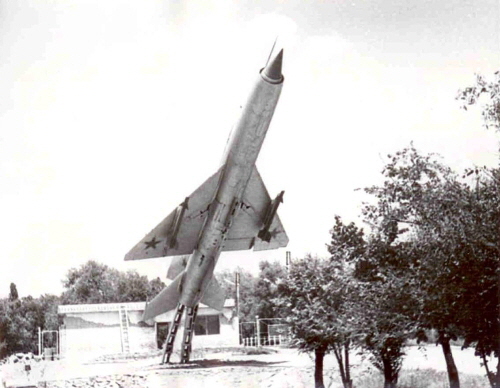
At the 715th Air Training Regiment pilots from Finland, India, Egypt, Syria, Iraq and Algeria have received retraining in the sixties. The first squadron of the regiment used MiG-17 ‘Fresco’, the second squadron used MiG-21F ‘Fishbed-B’ and MiG-21F-13 ‘Fishbed-C’ in the first half of the sixties. First they practised the martial procedures on MiG-17 ‘Fresco’ type, later they received retraining for MiG-21 ‘Fishbed’ based on that.

Left: Soviet MiG-21PFL ‘Fishbed-D’ export fighter at Frunze airport
The first Su-7BMK ‘Fitter-A’ bombers arrived at Lugovoye in 1966. In March, seven new Su-7 was launched from the factory, but only five arrived. Two machines were forced landing during an overflight. One at Irkutsk the other at Semipalatinsk airport. Before that, the 715th regiment's instructor pilots were trained in Su-7s at the Lipetsk training centre.

From 1966 the third squadron used the Su-7 ‘Fitter’ type. The first and second squadron used MiG-21F-13 ‘Fishbed-C’, PFL/FL ‘Fishbed-D’ types. They mainly retrained Arab and Indian pilots. The foreign pilots have not received combat training here. It was only a basic conversion training in Lugovoye!
* There is no exact information
In the seventies, the previous concept changed. The Soviet Airforce command have not separated the Warsaw Pact and the third-world pilots. Not the pilots, but the types were divided between the Krasnodar school and Frunze 5th Training Center. The foreign crews received retraining to bomber and reconnaissance types at Krasnodar from the seventies. (Su-7, Su-20, Su-22, MiG-25RB, and from the end of the eighties, the Su-25, and Su-24 models.) At the Frunze 5th Training Center's 715th Training Air Regiment retraining was to fighter and fighter-bomber types (Mig-23 ‘Flogger’ and MiG-29 ‘Fulcrum’ types)
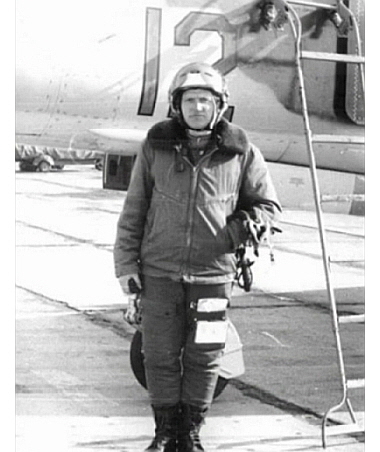
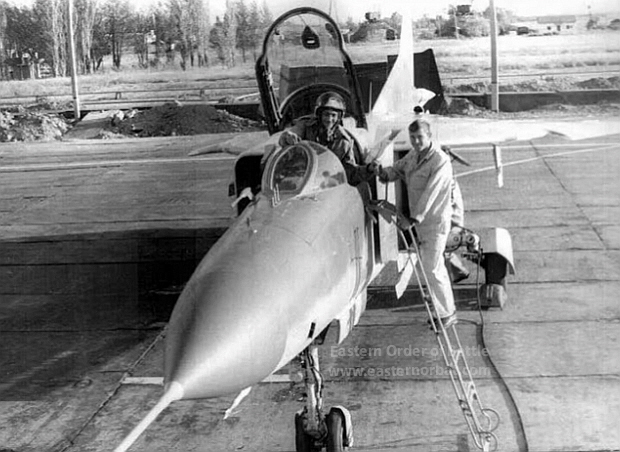
Soviet 715th Training Air regiment's crew and theirs MiG-23MS ‘Flogger-E’ export fighter aircraft in the seventies at Lugovoye airfiled . (B/N: red 12 and red 11)
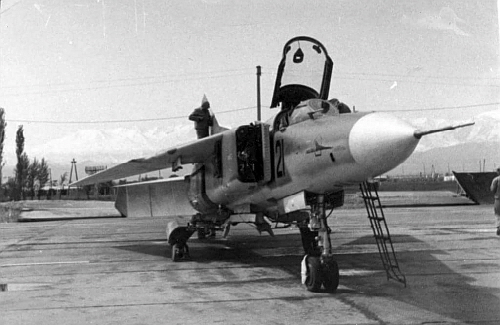
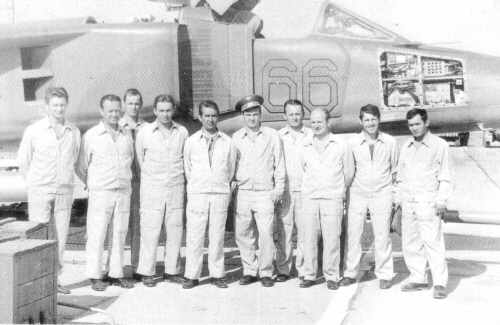
Soviet MiG-23MS ‘Flogger-E’ export fighter version in Lugovoye airport. In the background the snowy peaks of the Tien-San mountain.
First group of Czechoslovak Air Force’s pilots and soviet instructor in front of theirs MiG-23BN ‘Flogger-H’ fighter-bomber aircraft in Lugovoye in 1977. Photo: HEMA
The school of Frunze stopped the Su-7 ‘Fitter’ retraining in 1973. Instead, MiG-23s came to Lugovoye airport. The MiG-23BN ‘Flogger-H’ bombers were delivered by An-22s from the factory. The MiG-23UB ‘Flogger-C’s flew over from Irkutsk airport. In 1974 MiG-23MS export fighters arrived as well. At the time, Arab pilots were retrained to MiG-23BN ‘Flogger-H’ bomber and MiG-23MS ‘Flogger-E’ fighter types.
The first Warsaw Pact pilots arrived in 1976. The Bulgarian crews received retraining to MiG-23BN ‘Flogger-H’ bombers.
Lugovoye airport in the middle of the seventies:

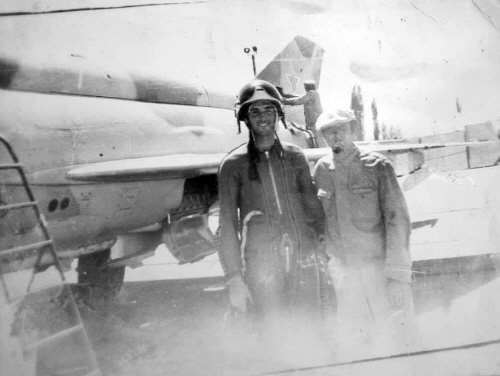
Cuban student and Soviet crew in front ot the MiG-21MF ‘Fishbed-J’ at the Lugovoye airport. Photo:Ezequiel Cancela_
Bulgarian aviation crews retraining to MiG-23BN at the Soviet Lugovoye airport in 1976
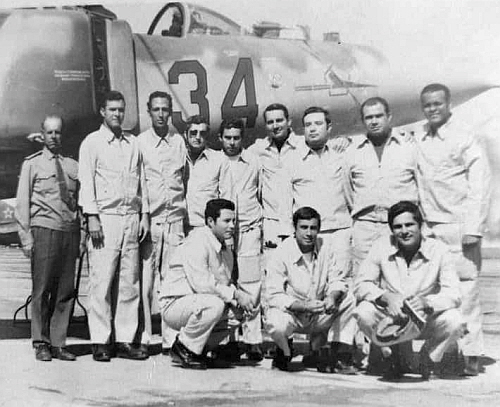
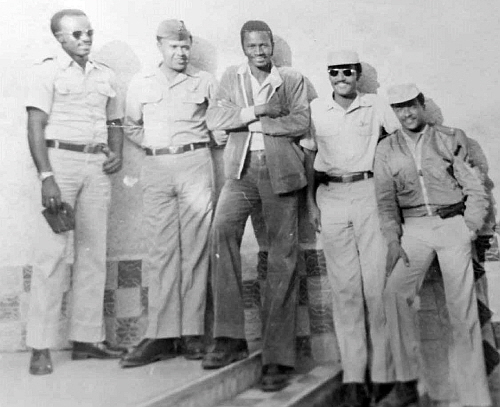
Cuban pilots MiG-23BN ‘Flogger-H’ bomber conversation training at Lugovoye airport in 1977 USSR
Former F-86 Sabre and F-5A Freedom Fighter Ethiopian pilots MiG-23BN ‘Flogger-H’ retraining in 1979
From 1978 the retraining of the Warsaw Pact instructor pilots and ground crews began to MiG-23MF ‘Flogger-B’ type at the 715th Air Training Regiment at the airport of Lugovaya. In 1978, Bulgarian, Romanian and Czechoslovak, in 1979 Polish and Hungarian crews learned in Kazakhstan. The Central Asian environment was unusual for European staff. The bad public safety, poor care, desert, venomous snakes and the spartan conditions was a culture shock for the Europeans.
Lugovoye airport in the end of the seventies:

Right: Algerian pilot in MiG-23BN ‘Flogger-H’ at Lugovoye airport in USSR in 1977
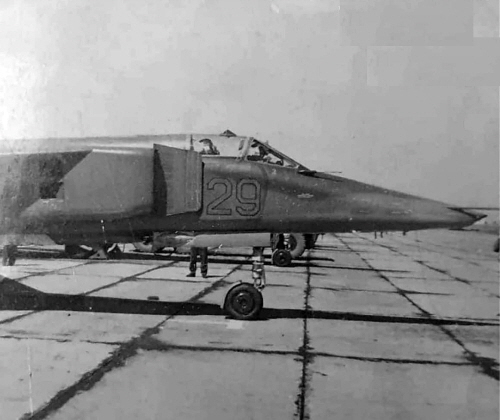
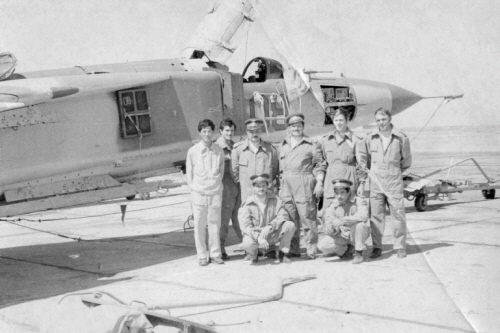
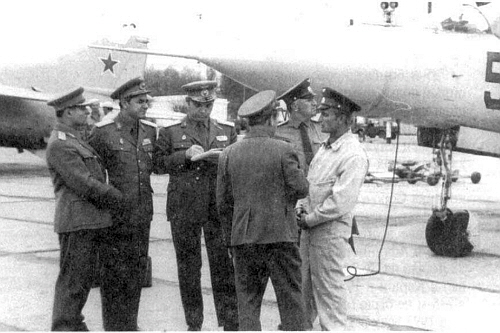
Romanian crew at Lugovoye airfield in front of their MiG-23MS ‘Flogger-E’ training aircraft in 1978.
Fourteen pilots, engineers and technicians from the Romanian Air Force followed a course on the MiG-23UB, MS and MF variants, which took place from August 3rd to September 21st 1978 in Lugovoye in the Kazakh SSR.
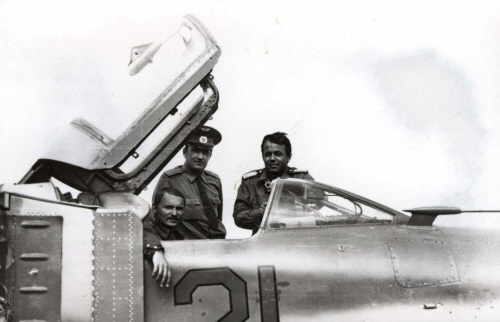
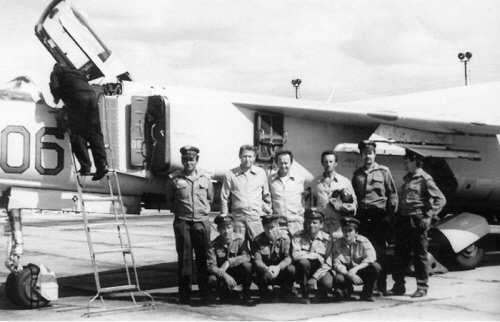
Two Hungarian and one Soviet pilot by theirs MiG-23MS ‘Flogger-E’ export fighter version in Lugovoye airport in 1979.
Czechoslovakia sent ten pilots and technicians to Lugovoye for MiG-23MF retraining in 1978. Between February and May they flew MiG-23MS and UB variants only. The more modern MiG-23MF ‘Flogger-B’ version was only flown three times. Photo: V tězslav Nohel
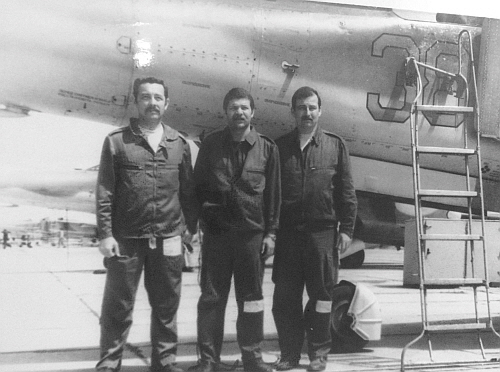
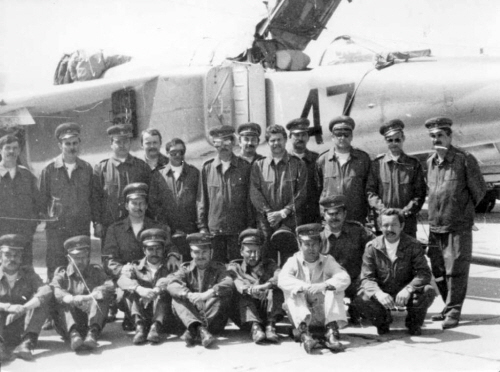
Twenty pilots of the Hungarian Air Defence completed the MiG-23MF ‘Flogger-B’ retraining between March and June 1979 at Lugovoye USSR
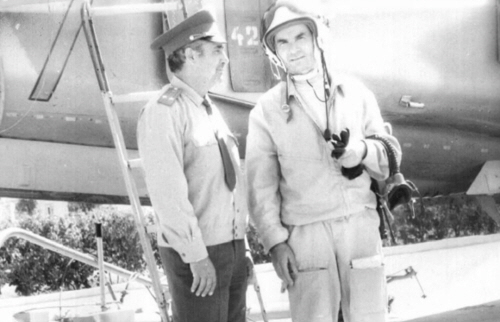
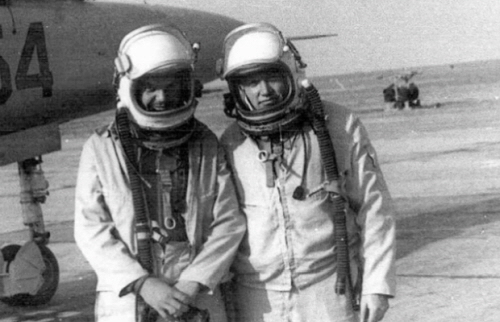
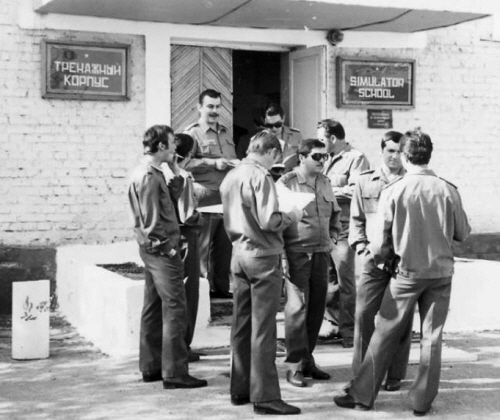
From 1978, the MiG-23MS 'Flogger-E' variant was gradually changed to MiG-23MF 'Flogger-B' type at the 715th Air Training Regiment.
In the late 1970s, pilots from the Arab world were trained on MiG-23MS, while pilots from the Warsaw Pact were trained on a mixture of MiG-23MF/MS alongside the MiG-23UB. One squadron was normally equipped with 22 aircraft (12 combat (MF/MS or BN) and 10 training (UB))
Left: Hungarian pilots in front of the Soviet KTS-6 MiG-23 simulator bulding at the Lugovoye airport
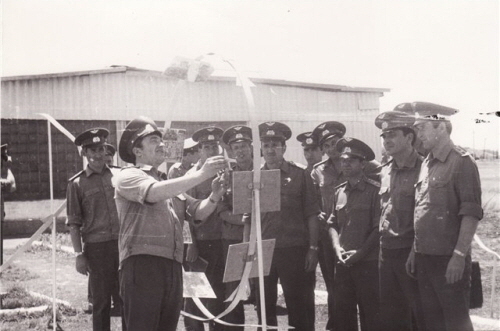
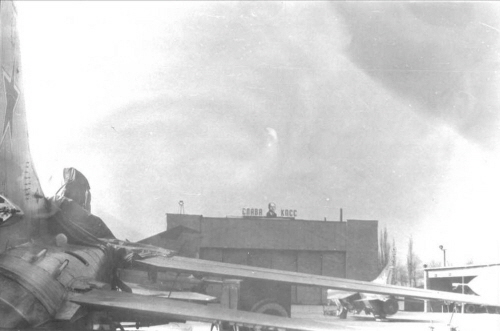
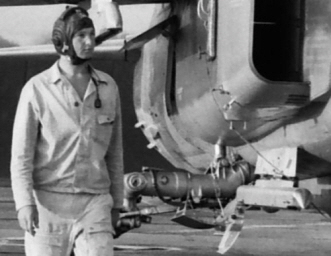
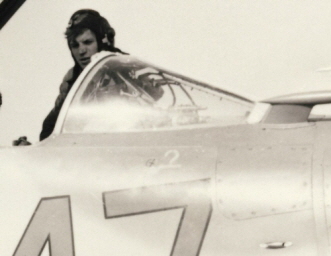
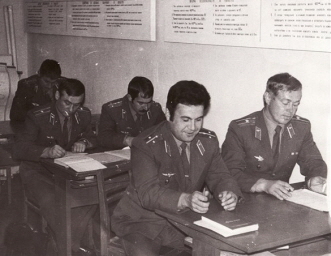
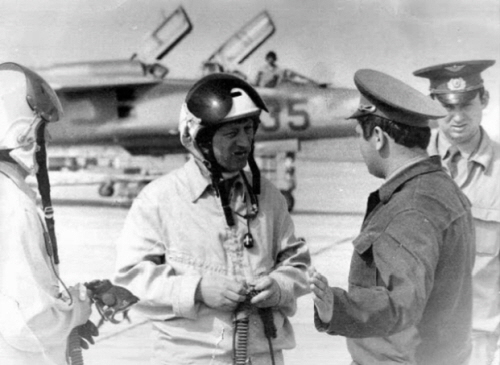
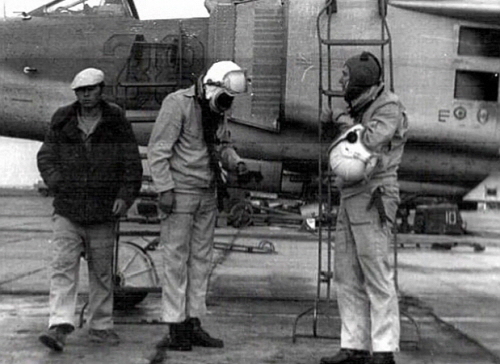
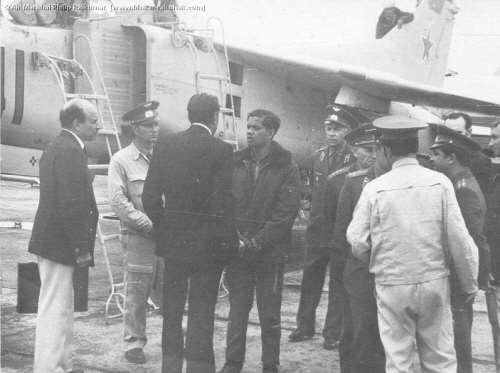
In 1979, the Indian Air Force delegation was flown to the Lugovaya training base in Kazakhstan. They tested the MiG-23 Flogger type. Then, more than 150 MiG-23BN/MF and UB variant has been bought in the first half of the eighties. With these, five fighter-bomber and two fighter squadrons were equipped.
In autumn 1980, started the retraining of the Indian pilots and ground crew to MiG-23BN ‘Flogger-H’ type.
Left: Wg. Cdr. P Rajkumar talking to Indian Air Marshal Katre (back to camera) and Air Cmde S K Mehra after flying the MiG-23UB ‘Flogger-C’ Trainer at Lugovoye, Kazakhstan on 17 Apr 79.. Photo: www.bharat-rakshak.com